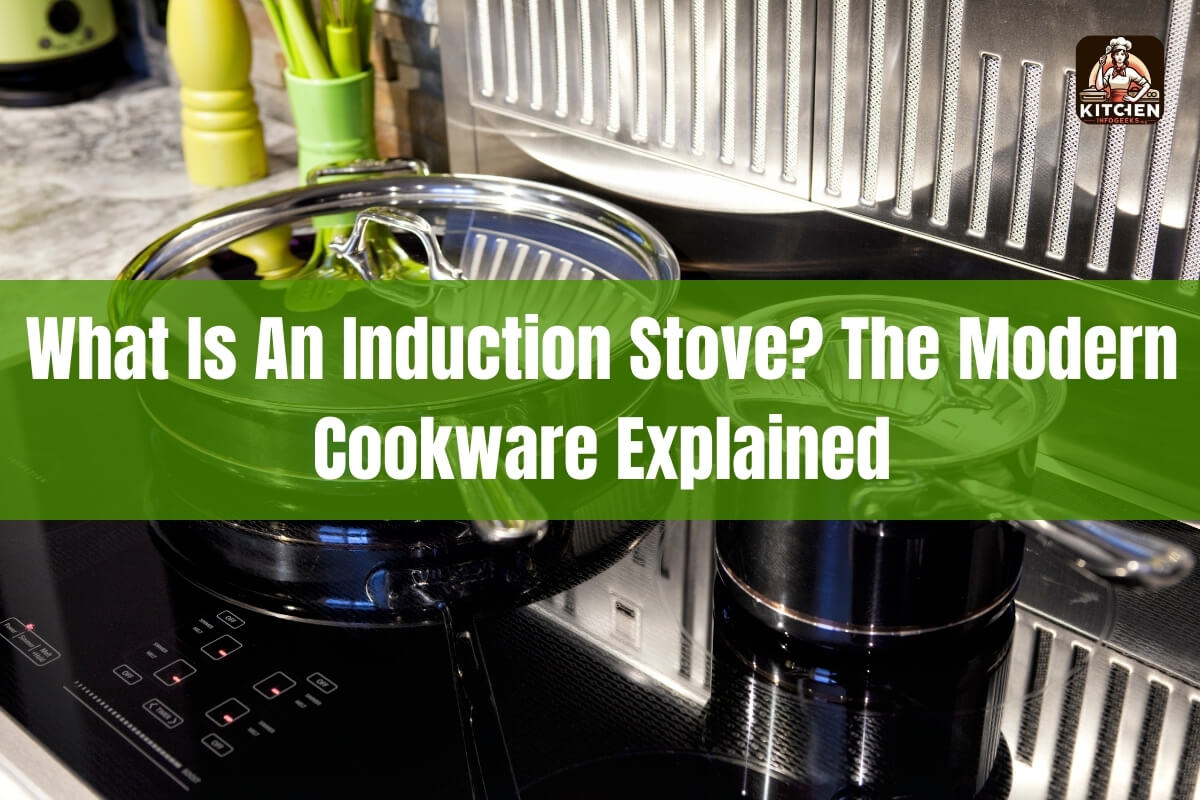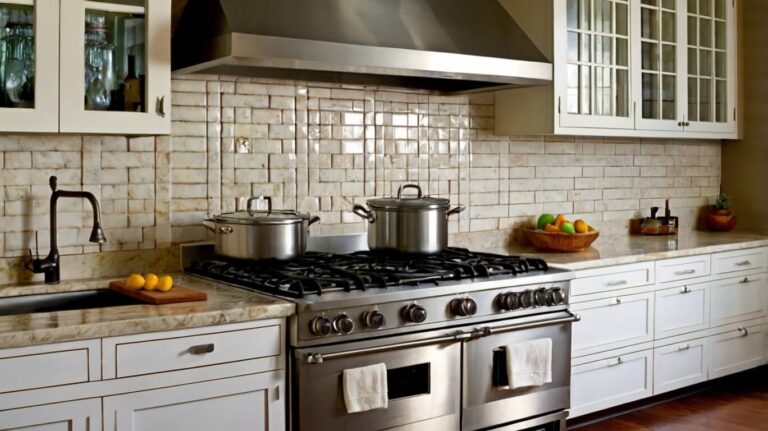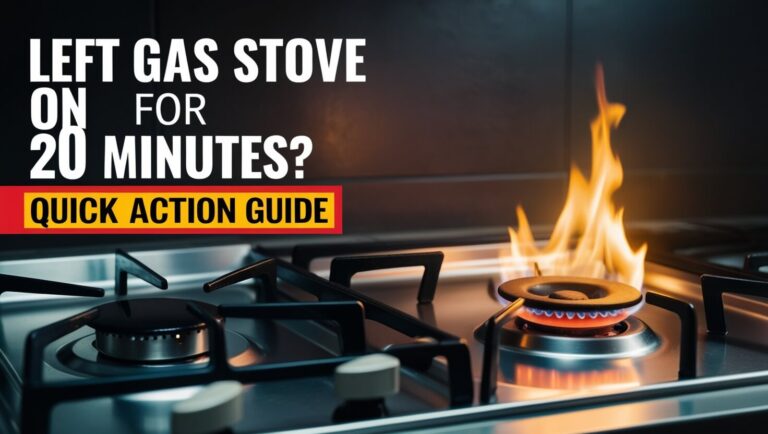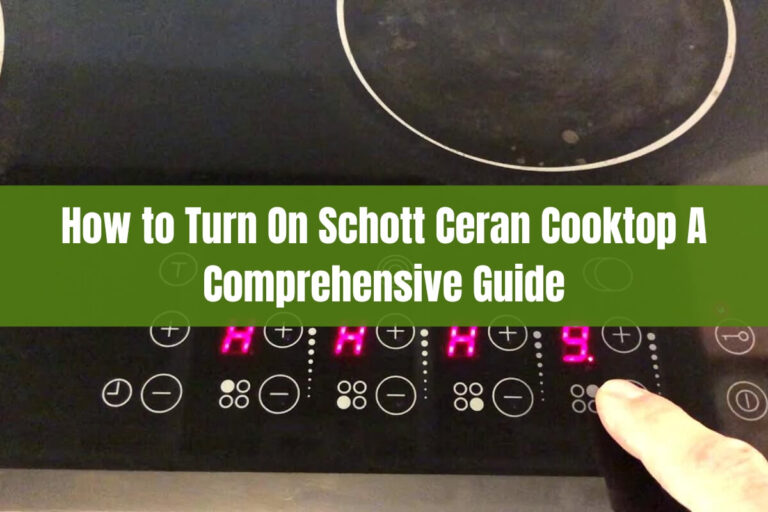
If you’re wondering “what is an induction stove?”, you’ve come to the right place. An induction stove is a modern cooking appliance that uses electromagnetic energy to directly heat cookware, providing efficient and precise heat control.
Are you tired of waiting forever for your stovetop to heat up? Frustrated with hot spots and uneven cooking? An induction stove could be the solution you’ve been looking for. In this comprehensive guide, we’ll dive deep into the world of induction cooking, exploring how it works, its advantages and disadvantages, compatible cookware, cleaning and maintenance, and how it stacks up against traditional electric and gas stoves.
How Does an Induction Stove Work?
An induction stove looks similar to a smooth electric cooktop, but the way it generates heat is entirely different. Instead of using thermal conduction from hot coils or an open flame, induction stoves rely on electromagnetic principles to directly heat cookware.
Here’s how it works:
Beneath the smooth glass-ceramic surface of an induction cooktop lie tightly wound copper coils. When you turn on a cooking zone, an alternating electric current flows through the coil, generating a magnetic field. If you place a pot or pan made of a magnetic material (like cast iron or magnetic stainless steel) on top of that cooking zone, the magnetic field induces electrical currents in the cookware itself.
These induced currents encounter resistance within the metal, causing the cookware to heat up almost instantly. The heat is generated right in the pan itself, rather than being transferred from a separate heating element. This direct energy transfer is what makes induction cooking so efficient and responsive.
Key Components of Induction Cooktops
While the core technology behind induction cooking is the electromagnetic coils, modern induction cooktops have a few other key components:
- Induction Coils: These are the copper wire coils underneath each cooking zone that create the magnetic fields.
- Cooling Fans/Vents: Induction cooktops generate less ambient heat than their electric or gas counterparts, but they still need ventilation to dissipate the heat produced by the electronics and induced currents.
- Smooth Glass-Ceramic Surface: Most induction cooktops feature a smooth, easy-to-clean surface made of glass-ceramic or similar material.
Advantages of Induction Stoves
Induction cooking offers several significant advantages over traditional stovetop technologies. Let’s explore some of the key benefits:
Energy Efficient
One of the biggest selling points of induction stoves is their energy efficiency. Because the heat is generated directly in the cookware, there’s very little energy lost in the transfer process. In fact, induction cooking is approximately 84% efficient, while gas and electric ranges max out at around 65-70% efficiency.
This improved efficiency leads to lower energy consumption and cheaper utility bills, making induction stoves an environmentally friendly and cost-effective choice in the long run.
Precise Temperature Control
With induction cooking, you get incredibly precise temperature control. The heat levels can be adjusted instantly by modulating the strength of the magnetic field. This responsiveness allows for ultra-low simmering temperatures and rapid boiling, all with the twist of a knob.
Superior temperature control means less risk of scorching or burning food. It also enables techniques like searing meat or delicate sauces that require near-instantaneous adjustments in heat.
Safety Features
Induction cooktops are designed with built-in safety features that make them an excellent choice for households with children or the elderly.
Since the cooktop itself doesn’t get hot (only the cookware does), there’s a much lower risk of accidental burns from touching the surface. Many models also have auto-shutoff functions that kill the power if no cookware is detected on the cooking zone after a set period.
Easy to Clean
The smooth, flat surface of an induction cooktop makes it incredibly easy to wipe up spills and splatters. There are no open flames, coiled elements, or tough-to-reach crevices to worry about.
Since the cooktop stays relatively cool during operation, spills are less likely to bake on, making clean-up a breeze. Just be sure to let the surface cool completely before wiping it down.
Disadvantages of Induction Cooktops
While induction stoves offer many benefits, there are a few potential drawbacks to consider:
Initial Cost
Induction cooktops and ranges tend to be more expensive than their basic electric or gas counterparts. An entry-level induction range can cost upwards of $1,000, while high-end models can set you back $3,000 or more.
However, the long-term energy savings and efficiency gains may help offset the higher upfront cost over time, especially if you plan to stay in your home for several years.
Compatible Cookware Required
In order for induction to work, you need cookware made of ferromagnetic materials like cast iron or magnetic stainless steel. This allows the magnetic fields to induce electrical currents and generate heat.
If you have an existing set of non-magnetic pots and pans, you may need to invest in new induction-compatible cookware. Alternatively, you can purchase inexpensive disk inserts that convert non-induction pieces for use on your cooktop.
To test if your current cookware will work, simply stick a magnet to the bottom of the pan. If it clings strongly, it should be induction-ready.
Potential Interference
The strong electromagnetic fields generated by induction cooktops have the potential to interfere with certain electronic devices like pacemakers or WiFi routers located too close to the appliance.
While the effects have not been conclusively proven, it’s generally recommended that people with pacemakers consult their doctors before using an induction cooktop. You may also need to keep your cooktop a reasonable distance from routers or other sensitive electronics.
Adjustment Period
If you’re accustomed to cooking on electric coils or gas flames, there may be a short adjustment period when switching to induction. The incredible responsiveness means you’ll need to stay attentive and get used to the rapid heating and cooling times.
Planning your cooking process and having ingredients fully prepped and ready to go can help ease the transition to this faster, more precise technology.
Best Induction Cookware
Now that you understand a little more about how induction works, you’re probably wondering what kind of cookware is best suited for these cooktops.
In general, any pots and pans made of ferromagnetic materials that allow the magnetic fields to induce electrical currents will work great for induction cooking. Here are some top choices:
- Cast Iron: Cast iron is a classic choice that heats evenly and is naturally induction-compatible. Just be mindful of the weight and potential for rust.
- Enameled Cast Iron: Enameled cast iron, like the iconic Le Creuset Dutch ovens, combines cast iron’s heating properties with a durable, smooth enamel finish.
- Magnetic Stainless Steel: Look for stainless steel cookware with a magnetic base layer. High-quality tri-ply and multi-ply pans work beautifully with induction.
When shopping for new induction pans, consider pieces with a thick, flat bottom for maximum surface contact and even heat distribution. Glass lids allow you to monitor cooking without losing heat.
Induction Stove Cleaning and Care
One of the biggest advantages of induction cooktops is how easy they are to keep clean. The smooth glass-ceramic surface has no crevices or openings to trap grime.
For daily cleaning, simply wipe down the cooktop with a damp cloth or paper towel while it’s still slightly warm (not hot). A few drops of mild dish soap can help cut through stuck-on splatters.
Avoid using abrasive scouring pads or harsh chemical cleaners, as these can scratch or discolor the surface over time. Many manufacturers also recommend using a dedicated cooktop cleaning cream to maintain that glossy finish.
If any spills do get baked on during cooking, don’t try to scrub at a hot surface. Allow the cooktop to cool completely, then gently scrape off the mess with a cooktop razor or scraper tool before wiping clean.
Remember to always deactivate the cooking zones and lights before cleaning your induction cooktop to prevent accidental activation or shocks.
Induction vs Electric vs Gas Cooktops
Now that we’ve covered the ins and outs of induction cooking, you might be wondering how it stacks up against the traditional electric and gas stovetop options.
Here’s a quick comparison of the three main cooktop technologies:
Induction
- Very energy efficient
- Rapid heating and cooling
- Precise temperature control
- Easy to clean flat surface
- More expensive upfront cost
- Requires induction-ready cookware
Electric (Coil or Smooth-Top)
- Moderately energy efficient
- Slower to heat up and cool down
- Less precise temperature control
- Coil elements can be tricky to clean
- Lower upfront cost
- Works with any cookware
Gas
- Moderate energy efficiency
- Rapid heating, slower to cool down
- Provides good temperature control
- Open flames and grates require more cleaning
- Lower upfront cost for basic models
- Works with any cookware
- Requires gas line hookup
As you can see, each cooktop type has its own set of pros and cons to weigh. Induction offers superior energy efficiency, responsiveness, and easy cleaning, but at a higher initial price point. Electric coil ranges are typically the most affordable option, while gas falls somewhere in the middle in terms of cost and performance.
Ultimately, the right choice will depend on your cooking habits, kitchen setup, budget, and personal preferences. But for precision cooking and modern efficiency, it’s hard to beat the advantages of an induction stove.
Conclusion
In this comprehensive guide, we’ve taken a deep dive into the world of induction cooking to answer the question “what is an induction stove?”. We’ve explored how this innovative technology works, its key advantages like energy efficiency and temperature control, as well as some potential drawbacks to keep in mind.
By directly heating the cookware itself through electromagnetic induction, induction stoves provide incredibly rapid and precise heat control with excellent energy efficiency. While the upfront cost is higher and you’ll need induction-ready pots and pans, the long-term savings and cooking benefits could make it a worthwhile investment.
If you’re looking to upgrade to a cooktop that combines the latest technology with user-friendly operation and easy cleaning, an induction stove is definitely worth considering. Just be prepared for a short adjustment period as you get used to the incredible responsiveness.
Of course, not every kitchen or cooking style is ideal for induction. But for those seeking an energy-smart modern appliance that delivers professional-level performance, look no further than the humble induction stove!






